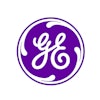
CHICAGO - In contrast to Medicare outpatient imaging trends, imaging use in the emergency department has continued to grow. But that may not be a bad thing, according to a presentation given on Sunday at the RSNA 2014 conference.
Dr. Santosh Selvarajan; Dr. David C. Levin; Laurence Parker, PhD; and Dr. Vijay Rao from Thomas Jefferson University Hospital investigated the use of imaging across modalities between 2002 and 2012. They found that all modalities included in the study increased except nuclear medicine.
"The [emergency department (ED)] is the only area where use of high-tech imaging is going up," Levin told AuntMinnie.com. "But I don't think ED doctors should be taken to task for this. Imaging is often the fastest way to evaluate their patients."
Reining in rapid growth
Policymakers and payors have been concerned about the rapid growth in imaging use, even though utilization rates have leveled off or dropped in recent years, Selvarajan told session attendees. Anecdotal reports suggest that imaging use in the ED may still be increasing, so the researchers decided to investigate ED imaging use trends by modality.
Selvarajan's group used Medicare data from 2002 to 2012, which provided procedure volume for x-ray, CT, noncardiac ultrasound, MR, and nuclear medicine. Using this information, the group calculated use rates per 1,000 beneficiaries. The researchers also identified which studies had been performed in the ED and whether they had been interpreted by radiologists or other physicians.
ED imaging use rates per 1,000 Medicare beneficiaries increased over the study time frame, often dramatically, the group found.
| ED imaging use | |||
| Modality | Use rate per 1,000 beneficiaries | Percent change | |
| 2002 | 2012 | ||
| CT | 57.2 | 147.9 | 159% |
| MR | 1.4 | 5.1 | 264% |
| Nuclear medicine | 2.8 | 2.1 | -25% |
| Noncardiac US | 9.5 | 21 | 121% |
| X-ray | 248.8 | 320 | 29% |
Selvarajan and colleagues attributed the decrease in nuclear medicine to code bundling for myocardial perfusion imaging that was implemented in 2010.
The researchers also found that radiologists were the ones interpreting the ED exams, rather than other clinicians. Their share of interpretations in 2012 were 99% for CT, 99% for MR, 93% for nuclear medicine, 89% for ultrasound, and 97% for x-ray.
Is ED imaging appropriate?
The findings imply that ED doctors could use appropriateness criteria support, but the situation may not be that straightforward, Levin told AuntMinnie.com.
 Dr. David C. Levin from Thomas Jefferson University.
Dr. David C. Levin from Thomas Jefferson University."Emergency doctors are under a lot of pressure," he said. "They need quick answers, and imaging can often provide those. One test can rule out a legion of clinical concerns."
In fact, rather than boosting healthcare costs, imaging could actually lower the cost of care in this setting, according to Levin.
"The right imaging test, performed in the first hour after the patient arrives, could save hours in the ED," he said.
In any case, appropriateness criteria for the ED could be different than for other settings.
"ED physicians would like to have their own imaging appropriateness criteria, and that makes sense -- they're seeing patients in a particular context," he said. "It would be great if the American College of Radiology and the American College of Emergency Physicians could work together to develop them."





















